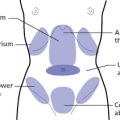 SWEATING
SWEATING
WHY WE ASK
Night sweating is quite different in so far as Western patients are more aware of this symptom; in particular, in menopausal women this is a major symptom that is definitely reported by the patient. Night sweating is clinically significant to clinch the diagnosis of Yin deficiency (although it should be remembered that other patterns may cause night sweating, e.g. Damp-Heat, Stomach-Heat, etc.).
CLINICAL SIGNIFICANCE OF SWEATING
PATHOLOGY OF SWEATING
Daytime sweating involves loss of fluids from the space between skin and muscles where the Defensive Qi circulates; sweating at night (called Dao Han in Chinese, which literally means ‘thief sweating’) involves loss of fluids from the bone level and is often called ‘steaming from the bones’. Therefore the fluids lost during night sweating are more precious than those lost during daytime sweating: the fluids lost during daytime sweating are simply Body Fluids (Jin-Ye), whereas those lost during night sweating are nutritive Yin Essences. However, both daytime and night-time sweating start a pathological vicious circle because they can derive from a deficiency but also aggravate that deficiency. In fact, daytime sweating injures Qi (the pores are called ‘Qi holes’) while night sweating injures Yin.
ABSENCE OF SWEATING
Symptoms and Signs, Chapter 76
In other exterior conditions, absence of sweating usually indicates Cold or Cold-Dampness in the superficial layers of the body (the space between skin and muscles).
For a more detailed description of various types of sweating, see Part 5, Chapter 76.



